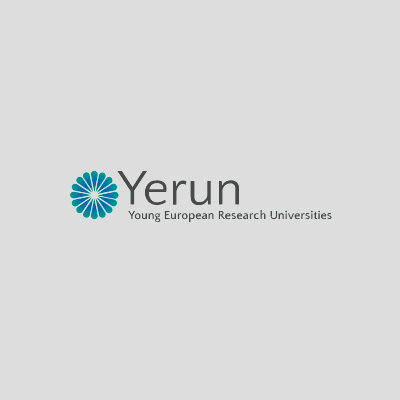Calidoscopi extra
6. Special Kaleidoscope
Internationalisation: An Essential Driver for Universities
Isabel Valverde, professor in the Humanities Department and vice-rector for internationalisation projects at UPF

The “university-internationalisation” coupling has a long history and, for us, is unquestionable. The circulation of teachers, students and researchers among universities in different locations around the world has always favoured the dissemination of ideas, science and knowledge. Indeed, as a centuries-old tradition, the university has always had an inherent international dimension, virtually from its very beginnings. Could anyone imagine a university that would be willing to withdraw into itself and give up this element? The answer to this question today is undoubtedly an unequivocal no.
In the contemporary context of globalisation, any university (worth its salt) considers internationalisation as a driver of its existence as an institution and its positioning within an increasingly competitive environment. Ultimately, notwithstanding the intense debate around what meanings we ascribe to the term, internationalisation contributes to a university’s prestige, its attractiveness and, therefore, its reputational value, undoubtedly constituting part of its capital.
Internationalisation contributes to a university’s prestige, its attractiveness and, therefore, its reputation, undoubtedly constituting part of its capital.
In recent decades, not only has internationalisation attained a central position in university life, after having been largely sidelined in higher education, but it has also gained in complexity and density. This is clear from the high level of discussion it has been subject to from academic, technical and managerial, economic and even political perspectives, among others. In this regard, we could quote the geopolitical initiatives for European consolidation, from the Erasmus project (1987) to the European universities initiative (2019), central to which is the value of internationalization from a global standpoint. In little over twenty years, we have gone from approaching this topic mainly in terms of foreign student exchanges or Study Abroad Programmes, to considering aspects like strategic alliances and partnerships, double or joint degree initiatives, internationalisation at home, digitalisation or global rankings. So today, we are clearly witnessing a shift in paradigm in what we understand as a university’s internationalisation. The current context makes it all the more pressing to rethink this from a critical perspective, bearing in mind that the global emergency sparked by Covid-19 has brought greater urgency to an already existing need.
We could say that, in a sense, internationalisation has a dual nature, or at least that it occupies a dual place in the institutional setting: it could be defined in relation to both a horizontal axis and to another vertical one, or could be simultaneously a cross-cutting element and strategic area. Although internationalisation permeates the different areas of university through a process of capillarity, it does not dissolve into these; in fact, it responds to its own conditions and internal dynamics that have meaning in their own right. Hence, the aforementioned complexity.
The UPF 2016-2025 Strategic Plan was right in recognising internationalisation as a transverse axis in the University’s projection towards the future. Moreover, today we are working, along the other axis, on the preparation of a comprehensive strategy that positions UPF as a competitive internationalised university on the global panorama. Necessarily converging in this strategy are the European university project EUTOPIA and the new developments regarding international degrees, as well as innovative international programmes and the participation in prestigious networks that bring together similar universities. Only a coordinated and focussed strategic design will allow us to overcome the structural challenge posed by receiving and integrating students and teachers from other countries and cultures, managing an international academic curriculum, recognising the inescapable learning value of international experience, research collaborations with strategic partners, and the internationalisation of our entire community, to mention some of the more relevant aspects.
The UPF 2016-2025 Strategic Plan was right in recognising internationalisation as a transverse axis in the University’s projection towards the future. Moreover, today we are working, along the other axis, on the preparation of a comprehensive strategy that positions UPF as a competitive internationalised university on the global panorama.
From this perspective, drawing up a strategic plan is a process susceptible to certain basic misunderstandings. Firstly is the perception that internationalisation does not require a specific strategy, as it is seen, ultimately, as a natural attribute of areas like research, cooperation or teachers’curricula. Opposing this seemingly natural and almost automatic presumption, is the understanding that the sum of discrete collaborations, despite their excellence and the quality of the relations formed, falls short of what can be achieved by a policy of internationalisation that reaches and benefits all university groups and functions in all their diversity. In this regard, a policy of alliances and network integration constitutes a kind of university diplomacy that is a fundamental and, today, practically essential part of a strategic drive for truly effective internationalisation.
There is also the reductionist vision, which equates internationalisation with mobility (particularly student mobility). Mobility has certainly been the cornerstone of internationalisation, a practice that in the last twenty years has taken on critical importance both in quantitative terms (consider the continual increase in the number of students benefiting from exchange programmes) and qualitative terms (the impact on learning, academic and staff experiences, and on graduates’ employability). All in all, internationalising is not solely a question of promoting and facilitating physical mobility, which, while a necessary part, is not enough by itself.
It is precisely the model of mobility on a massive and global scale which, for different reasons, has exhausted its potential and capacity to evolve. Besides questioning the sense of its exponential growth, the environmental costs in the context of the global climate crisis have contributed to a critical view for today’s approach to this phenomenon. Its reassessment preceded the spread of the pandemic and its impact on higher education throughout the world in recent months. To the issue of sustainability, we must add that of social inclusivity: although widespread, the enjoyment of international mobility remains limited.
The impact of Covid-19 has exacerbated a necessary process of reflection and is accelerating the transformation of the internationalisation model. The present challenge is to conceive of mobility practices that are more sustainable and dynamic, in keeping with a world that is entering a fourth industrial revolution.
The impact of Covid-19 has exacerbated a necessary process of reflection and is accelerating the transformation of the internationalisation model. The present challenge is to conceive of mobility practices that are more sustainable and dynamic, in keeping with a world that is entering a fourth industrial revolution. On the one hand, internationalisation at home will predictably gain greater strategic relevance insofar as it represents a new form of intercultural experience that helps to overcome geographical, social and cultural barriers. On the other hand, the more immediate challenge is the digital transformation of higher education based on modalities that, at once, complement physical mobility and take a step further. As regards internationalisation, the challenge is focussed on creatively developing the potential of virtual mobility in all its formats, but with a necessary component of face-to-face interaction. The physical international mobility model will evolve towards a diverse, hybrid and inclusive form of mobility, which forms part of what has come to be known as the “digital turn”.
The internationalisation of higher education institutions, such as universities, has reached a degree of complexity that was hard to imagine at the turn of the century, and which will only be accentuated by the climate emergency, globalisation and the present and, currently unpredictable, future crises.
Internationalization of the UPF community
Evolution of student mobility
Outgoing mobility from UPF
* Course affected by covid-19
Incoming mobility at UPF
* Course affected by covid-19
Agreements with 27 of the 50 best universities in the world (THE ranking, 2021)














